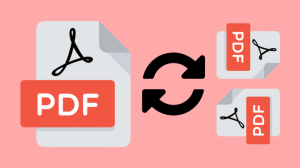Streamlining classroom management is essential for educators to create an effective learning environment and maximize instructional time. With the advancement of technology, cutting-edge software solutions offer innovative tools and resources to help teachers manage their classrooms more efficiently. From attendance tracking and behavior management to lesson planning and grading, these software solutions provide educators with the tools they need to streamline administrative tasks, engage students, and improve overall classroom productivity. By leveraging the power of technology, teachers can enhance their teaching practices and create more dynamic and engaging learning experiences for their students.
1. Attendance Tracking and Reporting
One of the key features of classroom management software is attendance tracking and reporting capabilities. These software solutions allow teachers to easily record student attendance, track tardiness, and absences, and generate comprehensive attendance reports. By automating the attendance tracking process, teachers can save time and eliminate the need for manual record-keeping. Additionally, attendance data can be used to identify trends, monitor student participation, and communicate with parents about their child’s attendance and academic progress. With real-time access to attendance information, teachers can make informed decisions to support student success and improve overall classroom management.
2. Behavior Management and Discipline
Effective behavior management is essential for maintaining a positive and productive learning environment. Management software offers tools and features to help teachers track student behavior, manage disciplinary incidents, and communicate with parents about behavior concerns. These software solutions often include behavior-tracking systems, where teachers can record incidents, assign consequences, and track behavior patterns over time. By implementing consistent behavior management strategies and using data-driven approaches, teachers can address behavioral issues proactively and create a more conducive learning environment for all students.
3. Lesson Planning and Curriculum Management
Streamlining lesson planning and curriculum management is another benefit of using management software. These platforms offer customizable lesson planning tools, curriculum mapping features, and resource libraries to help teachers design and organize their instructional materials more efficiently. Teachers can create lesson plans, align them with curriculum standards, and share them with colleagues or administrators for review. Additionally, some software solutions offer collaboration features that allow teachers to collaborate on lesson planning, share resources, and provide feedback to each other. By centralizing lesson planning and curriculum management in one platform, teachers can save time, stay organized, and ensure alignment with educational objectives.
4. Communication and Collaboration
Effective communication and collaboration are essential components of successful classroom management. Management software provides communication tools such as messaging systems, parent portals, and virtual classrooms to facilitate communication between teachers, students, and parents. Teachers can send announcements, share updates, and communicate important information with students and parents in real-time. Additionally, some software solutions offer collaboration features that enable teachers to collaborate with colleagues, share resources, and work together on projects or assignments. By fostering open communication and collaboration, teachers can build strong relationships with students and parents, enhance parental involvement, and create a supportive learning community.
5. Assessment and Grading
The teaching and learning process is not complete without assessment and grading as essential components. The process of designing, administering, and grading assignments, quizzes, and tests can be simplified with the help of management software that provides assessment and grading capabilities. Teachers can design individualized tests, distribute them to students, and monitor the kids’ development and performance over the school year. In addition, these platforms often incorporate grading tools that are capable of automating the process of grading, calculating grades, and producing full-grade reports for both students and their parents. Through the process of streamlining assessment and grading processes, teachers can offer students timely feedback, monitor their progress, and make choices based on data to accommodate the students’ different learning requirements.
Conclusion
Cutting-edge software solutions offer innovative tools and resources to streamline classroom management and enhance teaching practices. From attendance tracking and behavior management to lesson planning and assessment, these software solutions provide educators with the tools they need to create a more efficient, engaging, and productive learning environment. By leveraging technology to automate administrative tasks, communicate effectively, and collaborate with students and parents, teachers can focus more time and energy on instruction and student support.
Follow Techrado for more!




